Apply now to join our next cohort of Community Science Fellows and Community Leads!
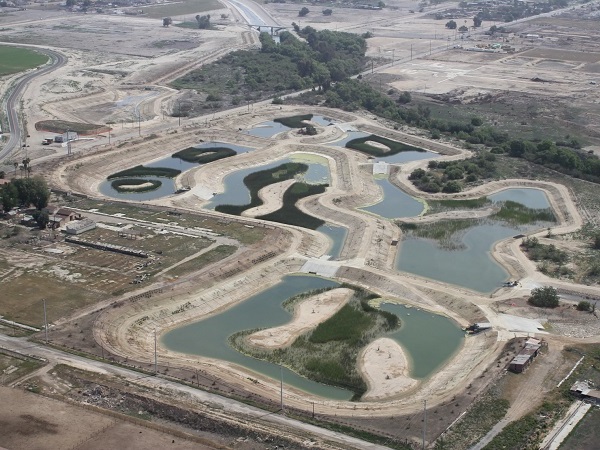
Photo courtesy of Ontario, California
Project Title: Addressing Bacterial Contamination in a Constructed Wetland
Location: Ontario, California
The Team:
The City of Ontario, California, built a constructed wetland in 2015 to improve downstream water quality from local stormwater runoff. Following construction, bacterial levels were found to be consistently higher in outflow than inflow. This project was launched in March 2017 to assess and quantify bacterial levels and sources to inform the management of the wetland for water treatment and recreation.
To analyze the quantity and nature of bacterial contamination, water samples were collected from each of the six ponds in the wetland system at inflow and outflow, along with a control, and processed in the laboratory.
Specifically: 100 mL water samples were added to a Colilert vessel (Westbrook, Maine, USA) and processed following the manufacturer’s protocol for the enumeration of E. coli and were isolated on agar media, and were incubated at 37 °C for 24 hours. For isolation of Enterococcus species from water, samples were prepared as in E. coli using Enterolert media (Westbrook, Maine, USA) and were plated for isolation on Enterococcosel agar and incubated at 37 °C for 48 hours.
The scientists, Drs. Mark Ibekwe and Shelton Murinda, were assisted by a technician and several undergraduate students from Cal Poly Pomona. The USDA-ARS-US Salinity Laboratory provided additional field support for the monthly sampling as well as laboratory space for ongoing analysis, including some DNA work.
When the project was initiated, six students were recruited to assist with sample processing in Dr. Murinda’s lab. Two students were available in the final stages of the project. All of the students involved earned research credit for their contributions to the analysis. Laboratory materials and supplies, including tools for the project were supplied by Drs. Ibekwe and Murinda.
This project was heavily characterized by data collection and laboratory analysis. Nevertheless, the community leaders were regularly consulted on and engaged in the design, set-up and refinement of the study, research progress, and development of conclusions.
The project team had monthly conference calls for the duration of the project. Each call was approximately 1 hour in length.
The primary outputs of this project were the initiation of a long term (over 1 year) research study to measure and track the location and quantity of bacteria in the wetlands, analysis of the results, and communication of the results to the community to inform management priorities. The research completed through this project showed a 99% reduction for E. coli and about 95% for enterococci between the influent and final effluent of the wetland system over the study period (April 2018 – May 2019). There were slight variations during different seasons.
Using data from this project, two students, Karina Quiroz and Nora Rodriguez presented a poster on “Determination of Water Quality of a Constructed Wetland Monitoring Fecal Indicator Bacteria” at the Southern California Conference on Undergraduate Research (Pasadena City College, CA, Nov. 17, 2018). (Simplified poster available here.) They also presented the research data at the Celebration of Research – Agriculture Student Research, Scholarship & Creative Activities Showcase hosted by College of Agriculture (Cal Poly Pomona, Pomona, CA, March 5, 2019).
Impact
The data tracked a significant (95-99%) decrease in wetland bacterial contamination over approximately 2 years, which coincided with maturation of the wetland in terms of plant and animal life. This analysis and observations conveyed comfort and assurances to the community that the wetlands were performing as designed and that significant modifications or engineering of the system were not needed to address these pollutant levels. This knowledge matters beyond Ontario. There was acknowledgement among the team that these constructed wetlands can serve as a model for other communities around the world as a low-input system for water quality improvement.
While overall bacterial levels decreased consistently, there was one location – pond #2 – that did not share the consistent downward trend. The community was able to flag this location as in need of additional attention – potentially responding via either a slight engineering adjustment or by mitigating bird loitering surrounding the recognized nesting season (birds were determined to be the primary bacteria source).
Finally, as a result of a healthy constructed wetland system, the final effluent water quality has reduced bacterial contaminants entering the Santa Ana River, and subsequently reduces pollution at Huntington Beach where the Santa Ana River empties into the Pacific Ocean. This reassures the Mill Creek recreational facility to be opened for public use.
On a personal note, the project team would like to congratulate Mark, who earned a promotion to GS-15 at USDA due, in part, to engagement on this project and other community science efforts.
The project team identified several contributions to their success:
The project team identified several things they might do differently if they were to start the project over again:
Advice for groups pursing similar community science projects:
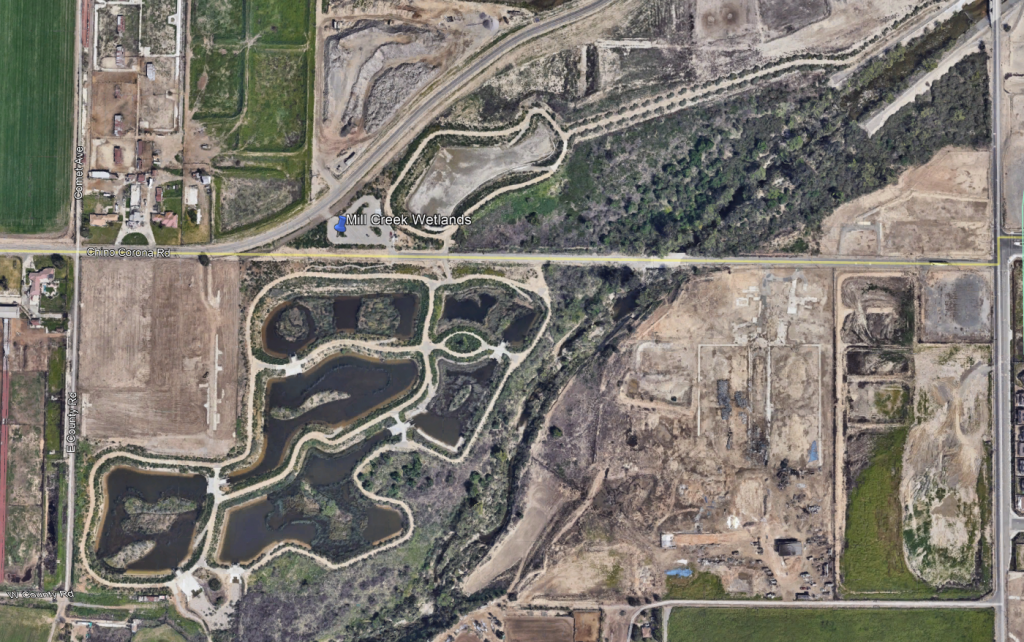
Aerial photograph of the Mill Creek Wetlands (Image courtesy of Google Earth)
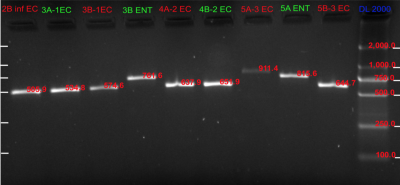
Gel showing DNA bands used for detection and identification of E. coli and Enterococcus species after PCR. (Image courtesy of Murinda Lab).
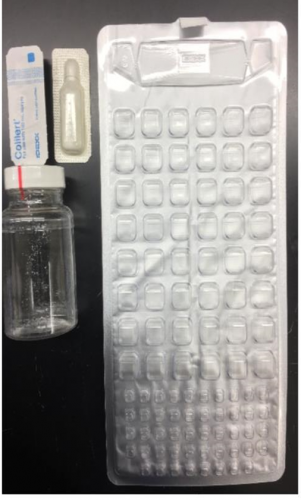
IDEXX Quanti-Tray system used for determination of mean probable numbers (MPN)/100 ml of fecal indicator bacteria (E. coli) in water samples. (Image courtesy of Ibekwe Lab)
The community of Ontario, California is an incorporated city within the West Valley of the Southern California Inland Empire (Riverside – San Bernardino – Ontario Metropolitan area). The community faces issues with stormwater runoff and has a responsibility to provide clean water for users downstream in Orange County. To improve water quality in stormwater runoff, Ontario built a constructed wetland in the neighboring City of Chino, Mill Creek Wetlands in 2015. These wetlands are essential for local water quality management, but also provide recreational and educational opportunities for nearby residents.
This natural treatment wetlands project has been recognized by ASCE, APWA, and CASQA for its design and implementation. However bacteria levels have been found to be consistently higher in outflow than inflow. The community must identify and address the source of this bacteria for regulatory purposes, as well as continued ecological and water treatment functions.
TEX has matched two scientists to work with the City of Ontario to identify the source of wetland bacterial contamination and provide recommendations for mitigation. The primary deliverables for this project will be the discovery of the source of 4 bacterial levels (Fecal Coliform, E. Coli, Streptococcus Bacteria, and Enterococcus Bacteria) and the development of an experimental mitigation plan.
Confidence in the source of bacterial contamination and the exploration of initial mitigation options will enable the community to pursue actions to ensure that the wetland works as intended, providing the community both water treatment functionality and a beautiful recreational area. This project will provide the community with opportunities to build on existing community education and foster interest and pride in the local constructed wetlands.
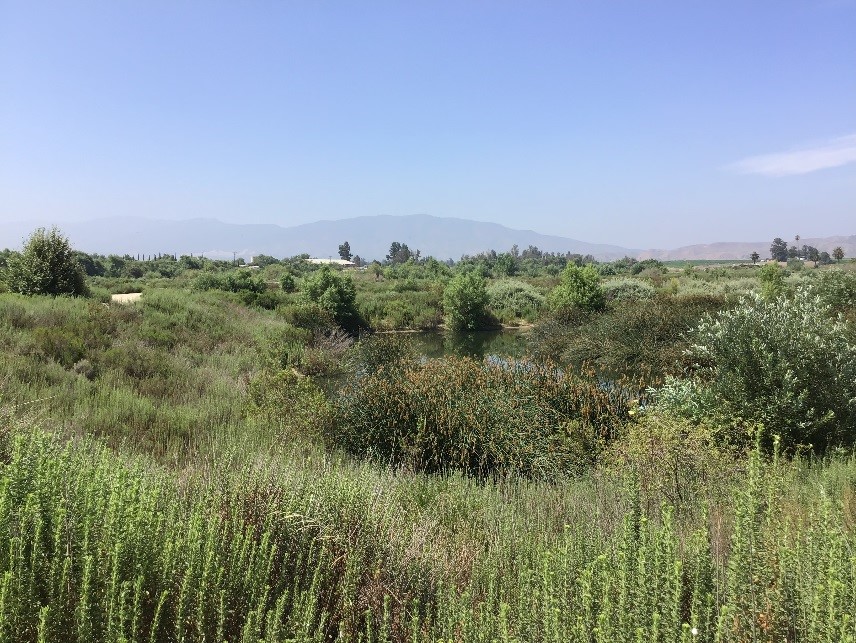
The public is enjoying the amenities the Mill Creek Wetlands has to offer. Whether walking, jogging, riding the trails either by bicycle or by horseback, or simply exploring nature and the habitat; families, friends, groups as well as individuals are taking delight in the water quality facility. Recently, the City of Ontario conducted a tour of the wetlands for a youth group through the Chino Basin Water Conservation District. Below are a few photographs from the tour.
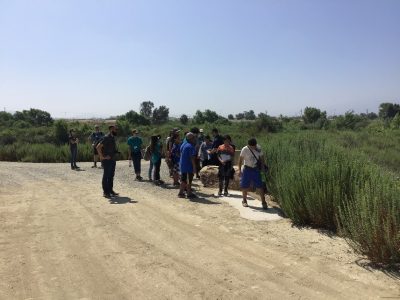
Youth exploring an interactive station at the Mill Creek (Photo courtesy of Eric Woosley, City of Ontario, Ca.)
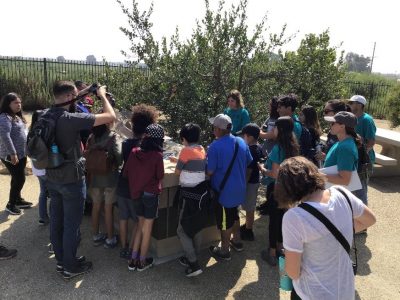
Demonstration of the 3-D Model of the Mill Creek Wetlands (Photo courtesy of Eric Woosley, City of Ontario, Ca.)
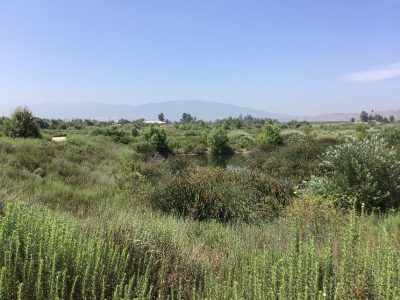
Beautiful scenery captured during the wetlands tour (Photo courtesy of Eric Woosley, City of Ontario, Ca.)
A nature lover who frequents the Mill Creek Wetlands, Dan Best, has provided many beautiful photographs as a hobbyist; below are a few his photographs:
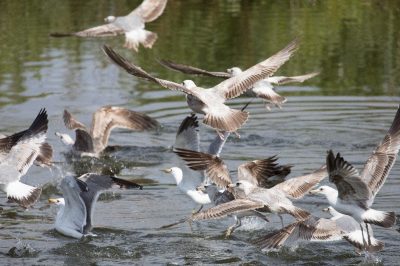
(Photo courtesy of Dan Best, @bestwun)
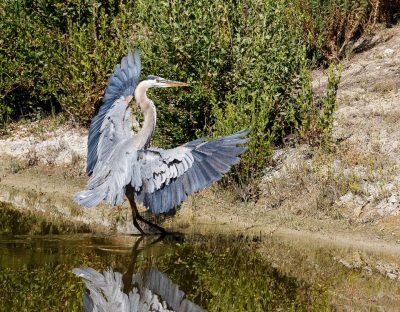
(Photo courtesy of Dan Best, @bestwun)
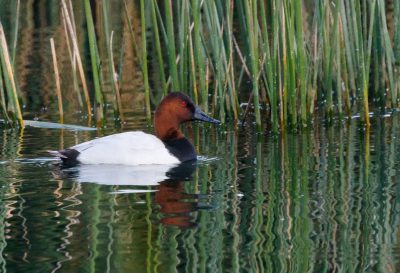
(Photo courtesy of Dan Best, @bestwun)

Scott Murphy is the Planning Director for the City of Ontario. Mr. Murphy has 30 years of both public and private planning experience in Southern California, working in various professional capacities. Mr. Murphy’s experience includes work on numerous specific plans, development codes, general plans, master plans, and major development projects. One of the key areas of focus presently is Ontario Ranch, a 13-square mile area annexed to the City of Ontario in 1999. Ontario Ranch anticipates the development of over 47,000 residential units, 5 million square feet of commercial space and 5.5 million square feet of industrial space. Mr. Murphy has a Bachelor’s degree in Urban and Regional Planning from Cal Poly Pomona.

Eric Woosley is employed by the City of Ontario and works in the Environmental Division of the Engineering Department. He has a Bachelor’s Degree in Civil Engineering from the California State Polytechnic University of Pomona, California, holds various certifications in stormwater, and has nearly a decade of experience with National Pollutant Discharge Elimination System (NPDES) compliance. He is the Project Manager of the Mill Creek Wetlands, and is responsible for managing the contractual agreements of multiple consultants and contractor team that performs the sampling and monitoring, reporting, and maintenance of the water treatment facility.

Dr. Abasiofiok (Mark) Ibekewe is a Microbiologist at the U.S. Department of Agriculture’s Agricultural Research Service in Riverside, California. Mark has 21 years of research experience with USDA-ARS, and has produced over 90 publications, including 67 peer-reviewed journal articles. He is an internationally recognized expert on the use of constructed wetlands for the removal of contaminant for water improvement, characterization of soil microbial community as a critical component of soil quality and health, and identification of factors and quantification of survival of E. coli O157 in different sample sources. Mark is interested in the use and manipulation of wetlands for improving regional water quality. Mark received his Ph.D. in Environmental Microbiology from the University of Maryland at College Park.

Dr. Shelton Murinda is a Professor in the Department of Animal and Veterinary Sciences at the California State Polytechnic University, Pomona (Cal Poly Pomona), CA. He is an Animal Scientist, Food Scientist (Microbiology, Safety, Chemistry & Processing) and Biotechnologist who has trained lived and/or worked on three continents (Africa, Europe and North America). He has extensive expertise in research, teaching extension and outreach, and has contributed to agricultural, food and research leadership for more than 20 years, and provides expertise on food safety and animal health issues nationwide. His current research topics focus on biosensor development for pathogen detection, prevalence of clostridia in horses, bovine mastitis, and an environmental sustainability project on development of safe nutritious animal feed from algae. Shelton received his Ph.D. in Food Science/ Microbiology from Pennsylvania State University.
(c) 2024 Thriving Earth Exchange